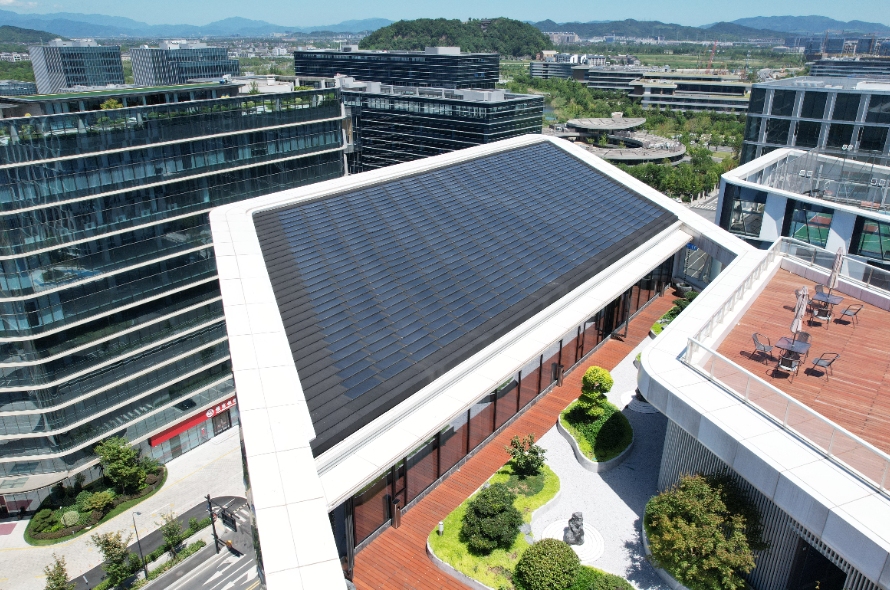May. 19, 2025
As the world grapples with the pressing challenges of climate change and energy sustainability, innovative solutions are emerging to meet the demands of modern architecture and urban living. One such solution is Building Integrated Photovoltaic (BIPV) panels, which are revolutionizing the way we think about solar energy. These integrated photovoltaic panels not only provide a source of renewable energy but also enhance the aesthetic appeal of buildings, making them an attractive option for architects, builders, and homeowners alike.

Building Integrated Photovoltaic panels are solar panels that are seamlessly integrated into the building’s structure, such as roofs, facades, and windows. Unlike traditional solar panels that are mounted on top of existing structures, BIPV systems are designed to replace conventional building materials, serving dual purposes: generating electricity and providing structural support. This versatility and malleability make BIPV systems enticing to modern professionals and consumers.
The advantages of BIPV systems are numerous. They not only contribute to energy efficiency but also reduce the overall carbon footprint of a building. By harnessing solar energy, BIPV panels can significantly lower electricity bills and provide a sustainable energy source for various applications, from powering appliances to charging electric vehicles. Furthermore, the aesthetic appeal of integrated photovoltaic panels allows architects to design buildings that are both functional and visually striking.
While BIPV systems are gaining traction, traditional solar panels mounted on roofs remain a popular choice for many homeowners and businesses. These solar panels are typically installed on the roof’s surface, capturing sunlight and converting it into electricity. The installation process is relatively straightforward, and the technology has become increasingly affordable over the years.
However, the limitations of traditional solar panels are becoming more apparent. For one, they can alter the visual appearance of a building, which may not align with the design vision of architects or the preferences of homeowners. Additionally, traditional solar panels require additional structural support, which can complicate the installation process and increase costs.
In contrast, BIPV systems offer a more integrated solution. By incorporating solar technology directly into the building’s design, architects can create a cohesive look that enhances the overall aesthetic. This integration also eliminates the need for additional mounting structures, streamlining the installation process and reducing costs.
Aesthetic Appeal: One of the most significant advantages of BIPV systems is their ability to blend seamlessly with the building’s design. With a variety of styles, colors, and finishes available, architects can create visually stunning structures that do not compromise on energy efficiency.
Space Efficiency: In urban environments where space is at a premium, BIPV systems provide an efficient solution for harnessing solar energy. By integrating photovoltaic technology into the building’s envelope, there is no need for additional land or roof space dedicated solely to solar panels.
Energy Independence: BIPV systems empower building owners to generate their own electricity, reducing reliance on the grid and enhancing energy independence. This is particularly beneficial in areas where energy costs are high or where access to reliable power sources is limited.
Sustainability: As the world shifts towards more sustainable practices, BIPV systems align perfectly with this movement. By generating clean energy and reducing greenhouse gas emissions, these systems contribute to a more sustainable future.
Increased Property Value: Buildings equipped with BIPV systems can see an increase in property value. As energy efficiency becomes a priority for buyers, properties that incorporate renewable energy solutions are likely to attract more interest in the real estate market.
Despite the numerous benefits of BIPV systems, there are challenges that need to be addressed. The initial cost of installation can be higher than traditional solar panels, which may deter some homeowners and builders. However, as technology advances and production costs decrease, it is expected that BIPV systems will become more accessible.
Additionally, the performance of BIPV panels can vary based on their integration into the building’s design. Factors such as orientation, shading, and local climate can impact energy generation. Therefore, careful planning and design are essential to maximize the efficiency of BIPV systems.
The potential for Building Integrated Photovoltaic technology is immense. With ongoing advancements in materials science and solar technology, we can expect to see even more innovative solutions that enhance the performance and aesthetics of BIPV systems.
Research is currently being conducted to develop more efficient solar cells, including organic photovoltaics and transparent solar panels that can be integrated into windows. These advancements could further expand the applications of BIPV systems, making them an even more attractive option for architects and builders.
Moreover, as governments and organizations worldwide continue to prioritize renewable energy and sustainability, the demand for BIPV systems is likely to grow. Incentives and subsidies for solar energy adoption can further drive the integration of photovoltaic technology into building designs.
Building Integrated Photovoltaic panels represent a significant step forward in the quest for sustainable architecture and energy independence. By seamlessly integrating solar technology into the building’s design, BIPV systems offer a multitude of benefits, from aesthetic appeal to energy efficiency. As the world continues to embrace renewable energy solutions, BIPV technology is poised to play a crucial role in shaping the future of urban living.
For architects, builders, and homeowners, the choice to invest in BIPV systems is not just about energy savings; it is about creating a sustainable legacy for future generations. As we move towards a greener future, the integration of solar panels on roofs and building facades will undoubtedly become a hallmark of modern architecture, paving the way for a more sustainable and energy-efficient world.